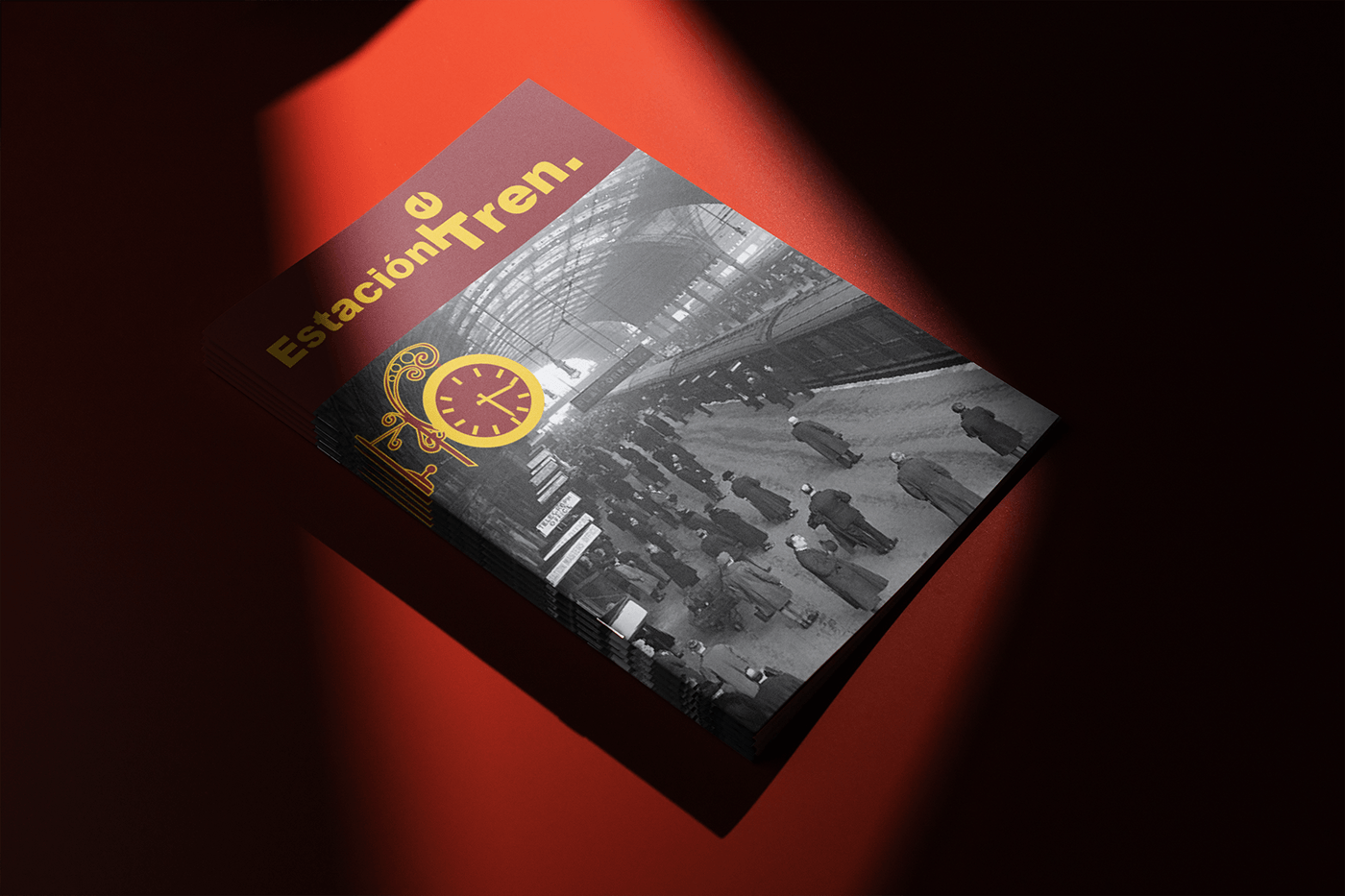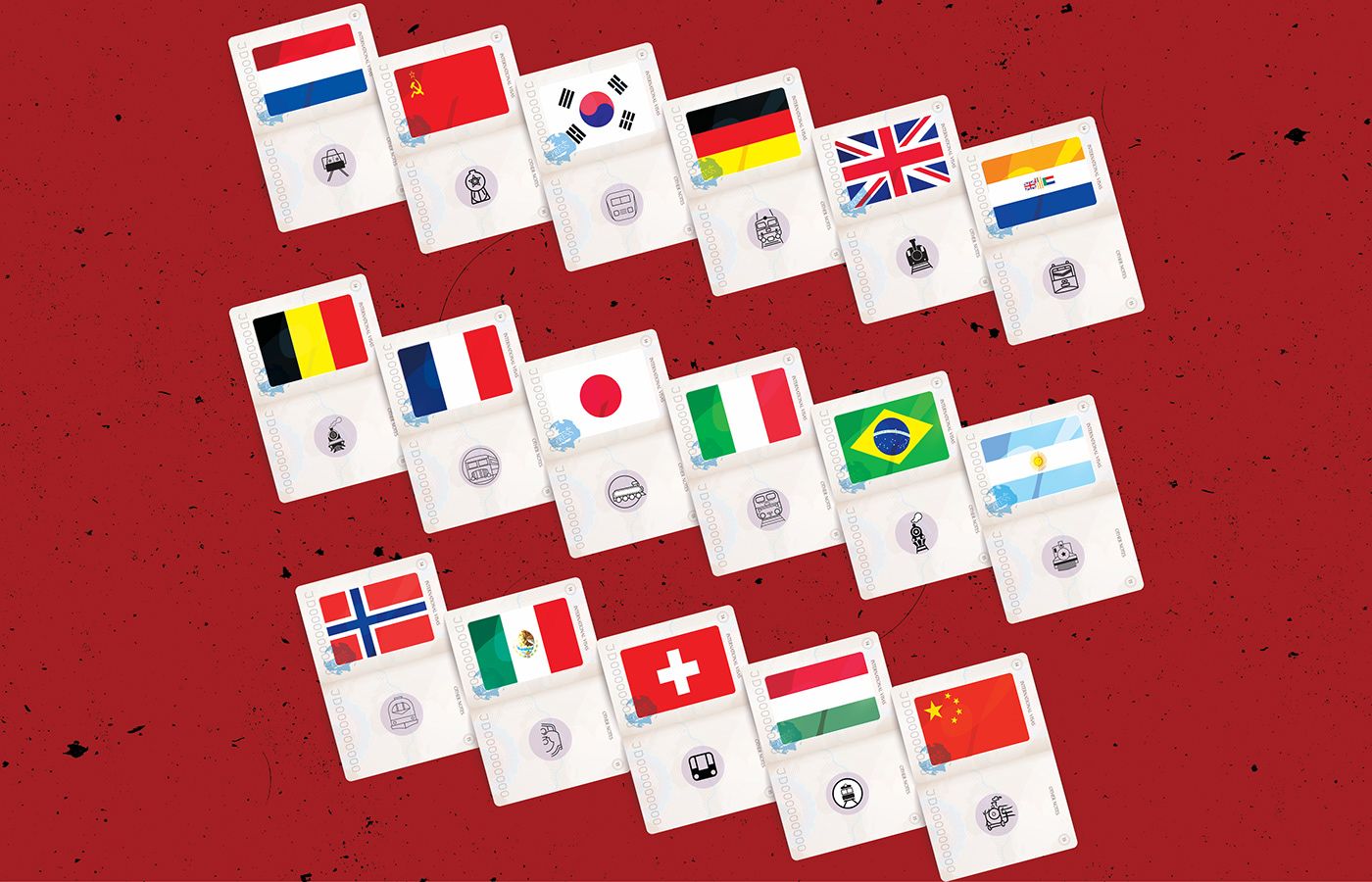
Train Station Symbols Design
BA Digital Design @Vakalo Art & Design College ©2023
2nd Year | Graphic Design Applications Course
November 30 - December 21 2023
November 30 - December 21 2023
Brief:
Design a symbol set for the needs of a train station that it's placed in a different - past period of time and country. Then design a cover for a train time schedule.
Each student was given a specific place and time period. A good research was mandatory in order for the designers to have a good understanding of the era and study the different culture. So it's an icon design project with a time twist.
Participants / Era / Country:
Christoforos Proniari / 1965 / Soviet Union
Pari Karra / 1960 / The Netherlands
Stella Spanou / 1985 / South Korea
Iliana Beintari / 1965 / Italy
Anastasia Rovatsou / 1970 / Germany
Effie Lemonidou / 1985 / South Africa
Vasiliki Chatzikonstanti / 1965 / Brazil
Marios Kytoudis / 1970 / France
Anna Maria Marinopoulou / 1935 / Belgium
Christos Kytoudis / 1985 / Hungary
Andreas Peschanskyy / 1970 / Switzerland
Ioanna Saita / 1920 / Japan
Nikos Daskalakis / 1960 / Mexico
Christodoulos Tziouklis / 1940 / Argentina
Petros Sideris / 1920 / United Kingdom
Komninos Palaiologos / 1970 / Norway
Paris Gouziotis / 1965 / China
Irida Havela / 1955 / USA
Eirini Nirgianaki / 1965 / Spain
Tutors:
Dimitris Kanellopoulos & Marina Tzatzo
:::::::::::::::::::::::::::::::::::::::::::::::::::::::::::::::::::::::::::::::::::::::::::::::::::::::::::::::::::
Christoforos Proniari / 1965 / Soviet Union





In 1965, the USSR (Union of Soviet Socialist Republics) had an extensive and well-de- veloped railroad system that played a crucial role in the country's economy and trans- portation infrastructure. The Soviet railroads were an essential component of the over- all transportation network, facilitating the movement of goods, raw materials, and pas- sengers across the vast expanse of the Soviet Union.The Trans-Siberian Railway, stretching across the entire Soviet Union from Moscow to Vladivostok, remained a criti- cal artery. It was the longest continuous railroad line in the world, covering approxi- mately 5,772 miles (9,289 kilometers). This railway played a crucial role in connecting the European part of the USSR with its far eastern regions.


Pari Karra / 1960 / The Netherlands





In the vibrant era of 1960s Netherlands, as the nation experienced a period of post-war reconstruction and economic prosperity, the design of symbols for a train station became a reflection of the prevailing cultural and social dynamics. Influenced by the burgeoning modernist movement and the Dutch commitment to functionalism, my design sought to capture the essence of progress and efficiency. Drawing inspiration from the iconic Dutch design principles. As the Netherlands embraced modernity, my design for the train station symbols embodied a harmonious blend of functionality and artistic expression, encapsulating the spirit of a transformative decade.

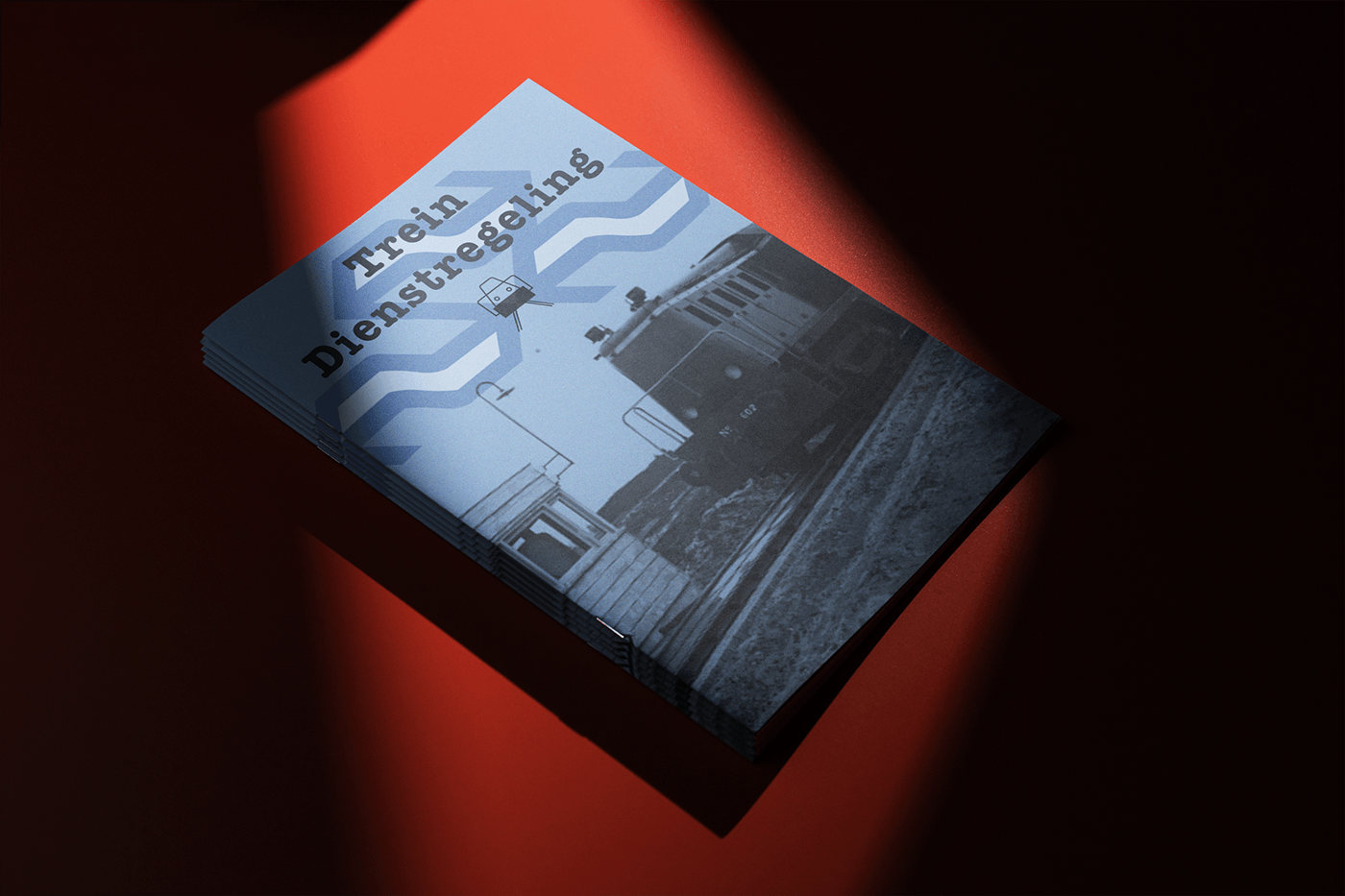
Stella Spanou / 1985 / South Korea





In 1985, South Korea's railway system mirrored the nation's remarkable journey of prog- ress. As sleek trains traversed the landscape, they symbolized not only the efficient movement of people and goods but also the unstoppable momentum of South Korea's economic and technological ascent.
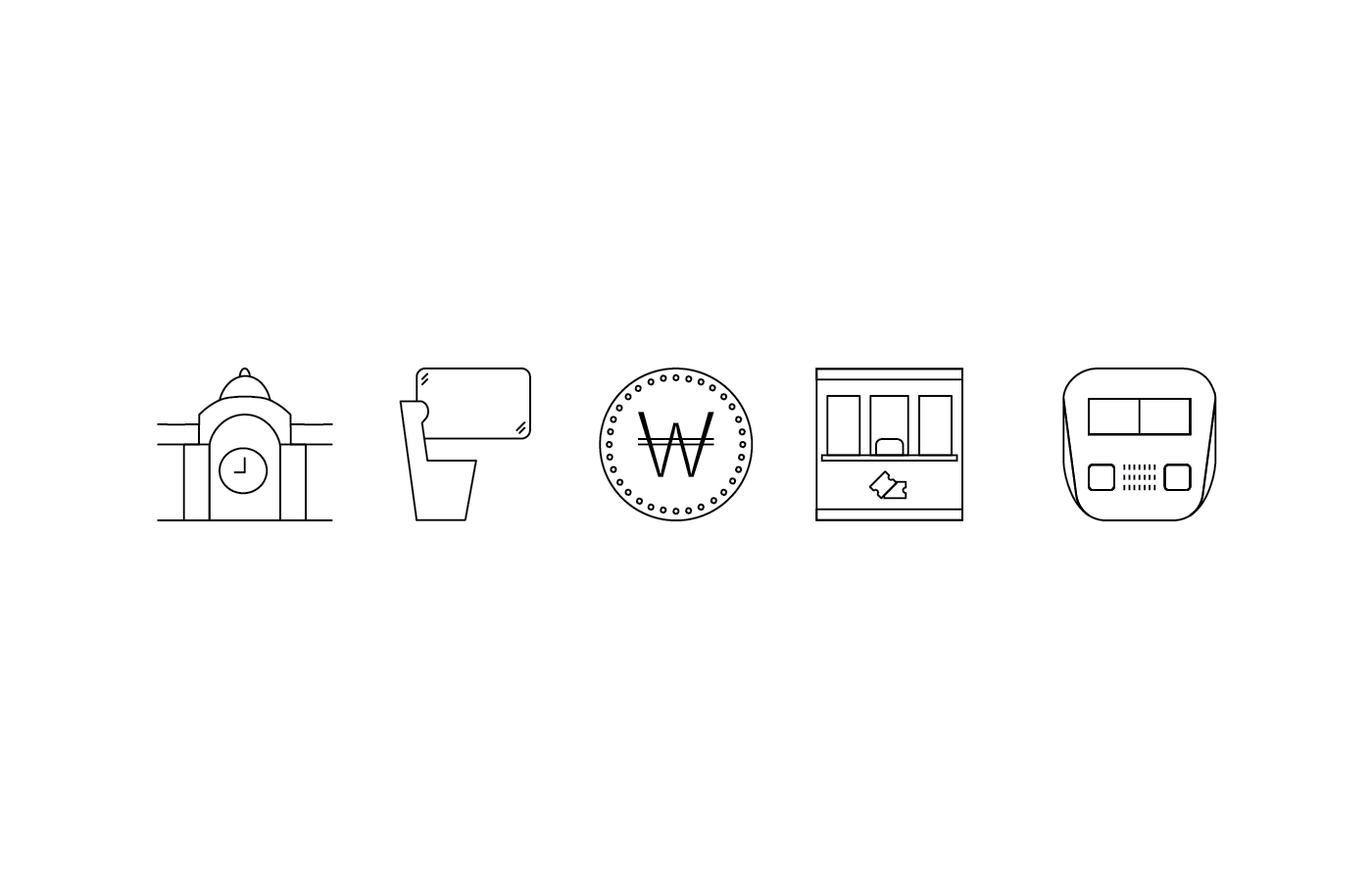
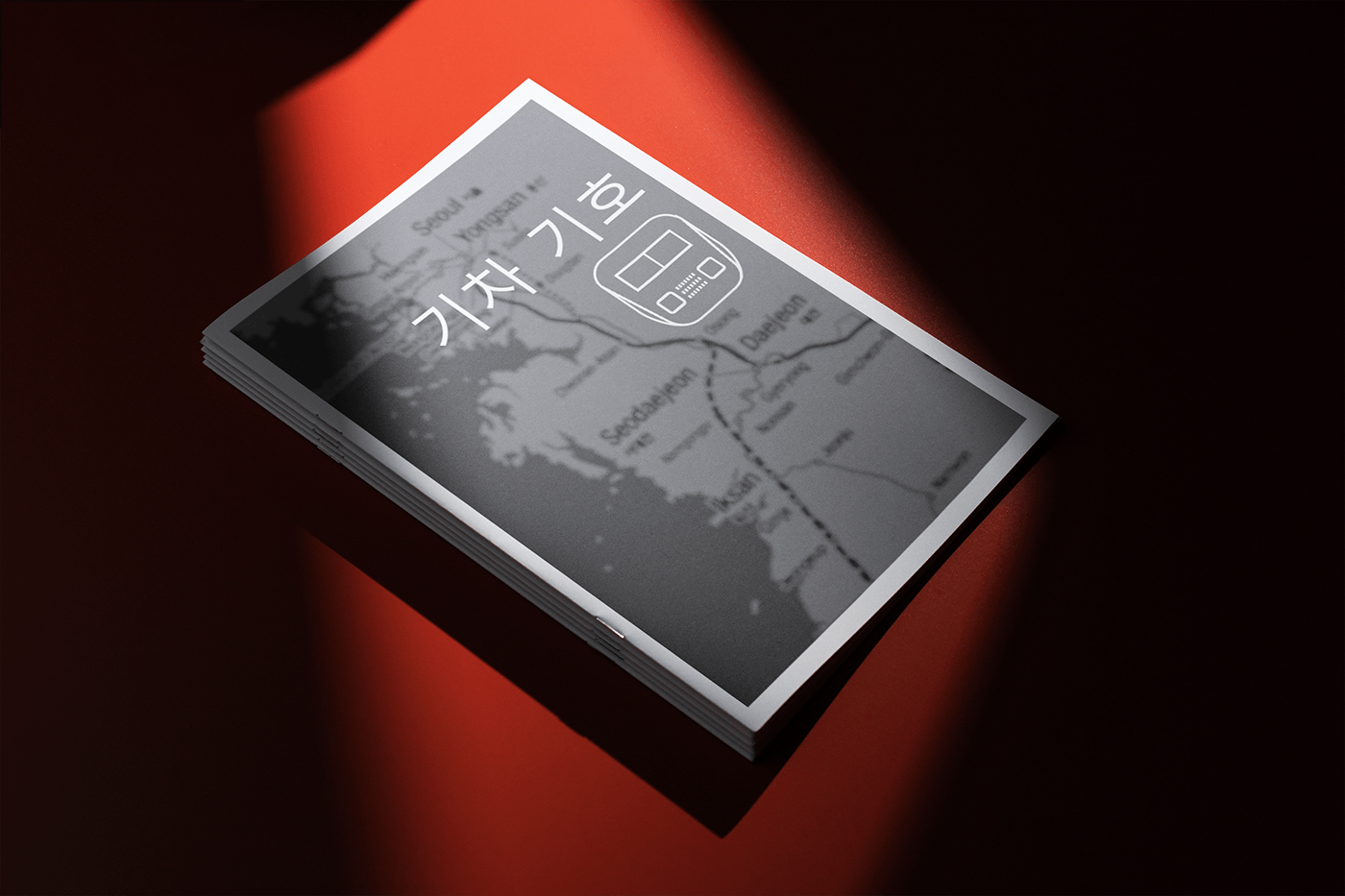
Iliana Beintari / 1965 / Italy






My project takes a look back at the train station symbols that Italy put out in 1965. In line with the era's wide use of bold graphic styles, these symbols embody the spirit of a time with novel ways to express visually. The redesign takes its cue from the graphic age's exciting typographic styles and rich color palettes. Every symbol depicts elements in a modern way, linking nostalgia and today. For instance for the train station symbol I used the Rome Station for inspiration.
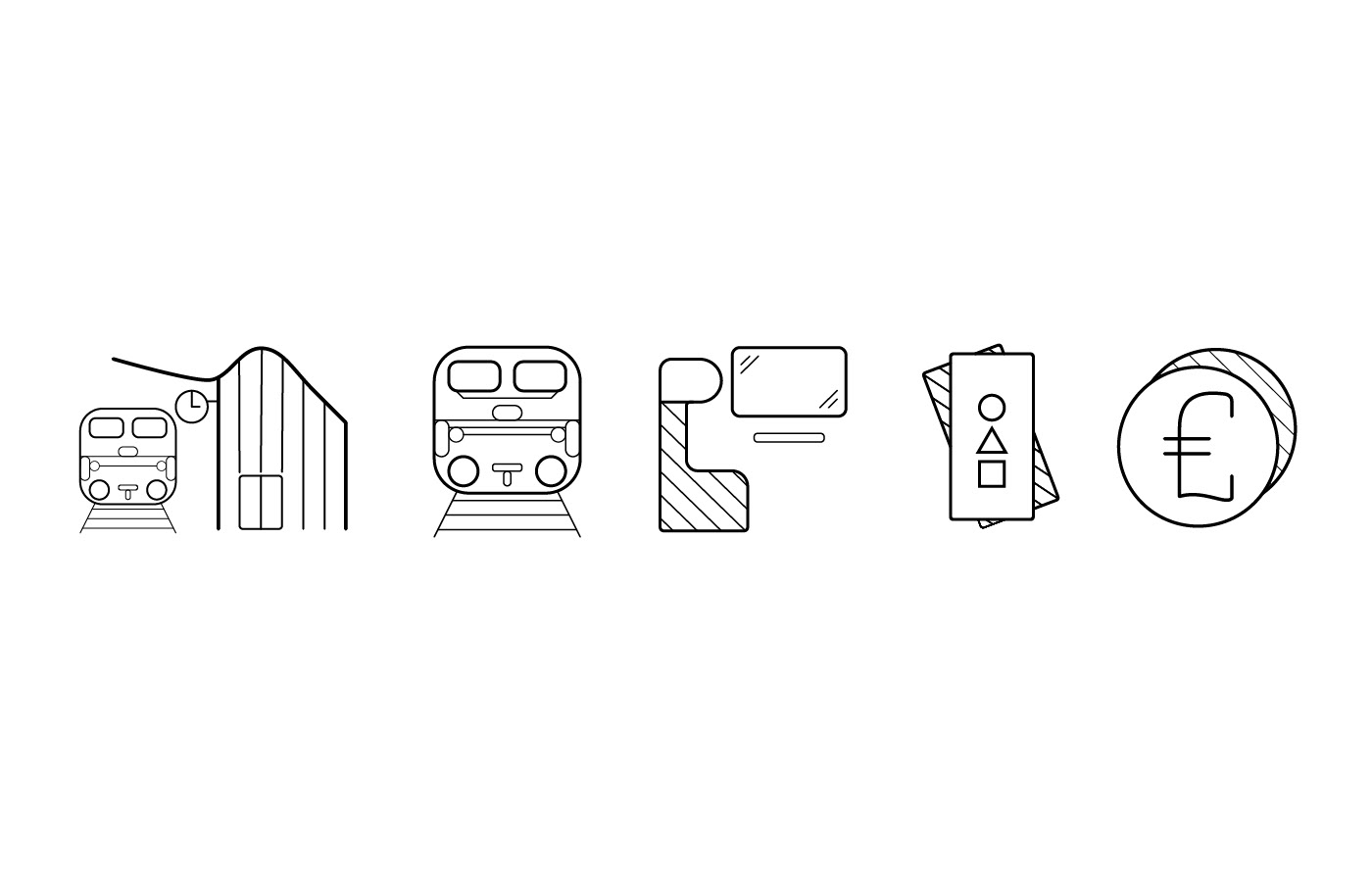
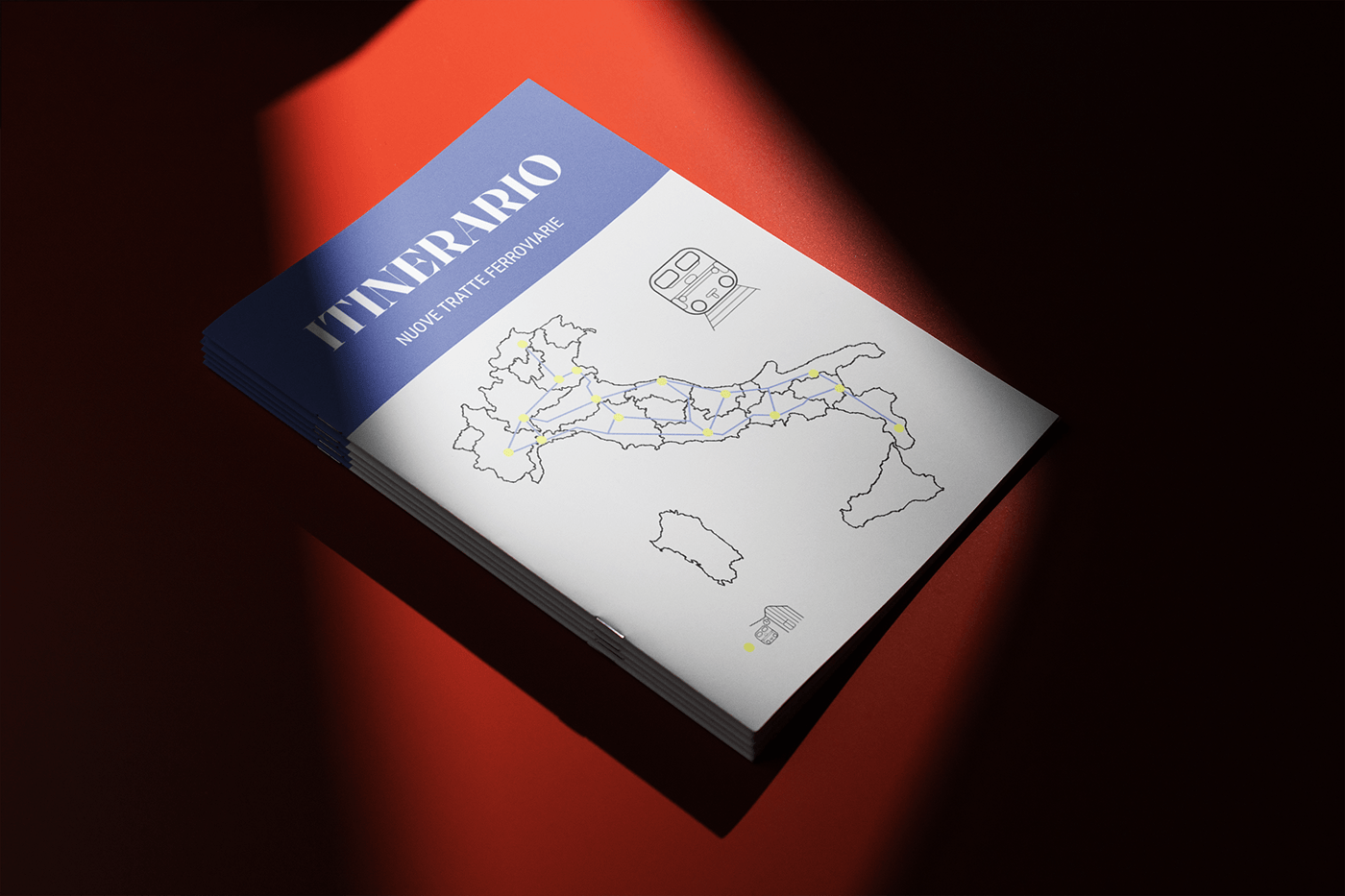
Anastasia Rovatsou / 1970 / Germany





In the 1970s, West Germany's train system epitomized efficiency and progress. Operated by the Deutsche Bundesbahn, the network seamlessly connected cities and regions. Train stations buzzed with activity, featuring iconic departure boards and the rhythmic sounds of locomotives. The class 103 electric locomotive and the groundbreaking Inter- CityExpress (ICE) trains were symbols of design innovation and speed. Punctuality and precision became hallmarks of the German rail experience, contributing to the coun- try's economic success. The 1970s laid the foundation for today's modern rail network, showcasing Germany's enduring commitment to advanced transportation and connec- tivity.

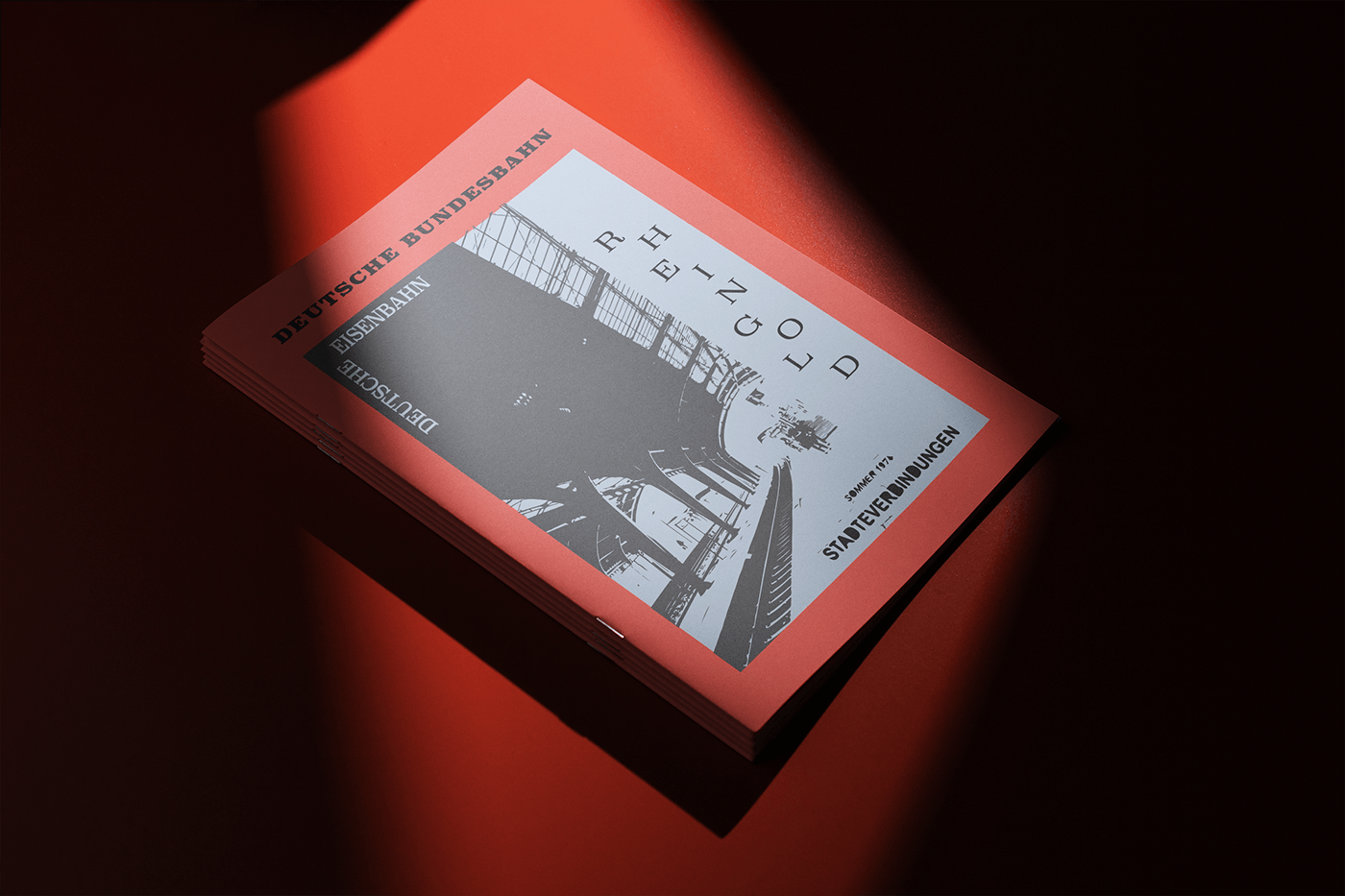
Effie Lemonidou / 1985 / South Africa





These symbols are to represent the railway system in South Africa of 1985. The railway was a really important part of the country despite the riot that was happening at that time. Also the railway was really important for the economy for the country. I have designed a set of symbols that can be used to identify different signs . The symbols represent a train, station, ticket office, passenger seat and money exchange. The symbols are meant to be simple and easily recognisable from everyone that wants to use the railway stations.
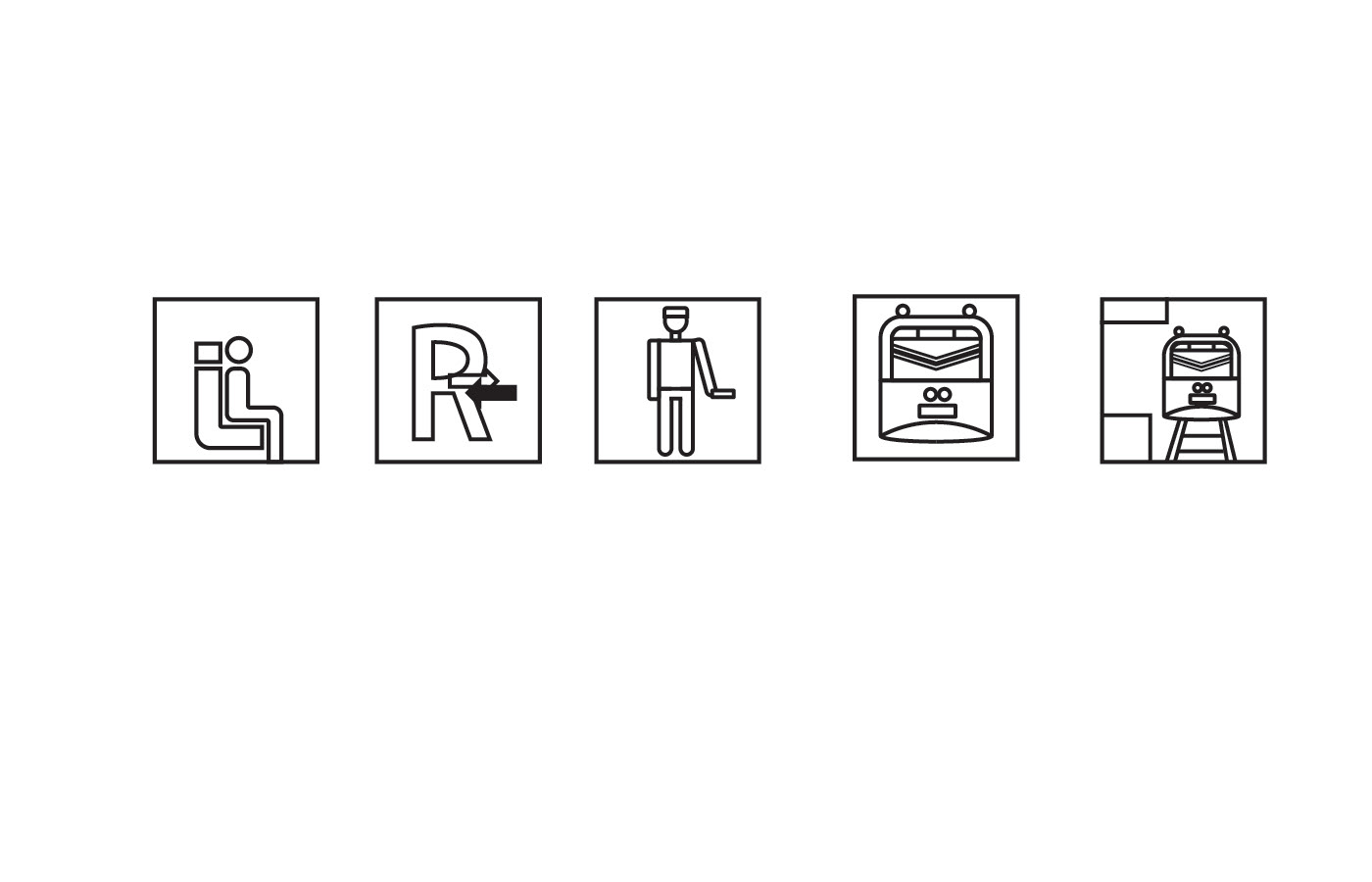

Vasiliki Chatzikonstanti / 1965 / Brazil





In the mid-1960s, Brazil's railway system was a vital part of the country's transportation infrastructure. State-owned or state-concessioned railways played a key role in transporting goods, particularly coffee, minerals, and industrial products, from production centers to export ports. However, this period also saw the beginning of a decline in rail transport as road infrastructure developed, leading to a shift toward truck transportation. Despite government efforts to modernize the railway system, challenges persisted, and the 1960s marked a period of change in Brazilian politics with potential implications for transportation policies.
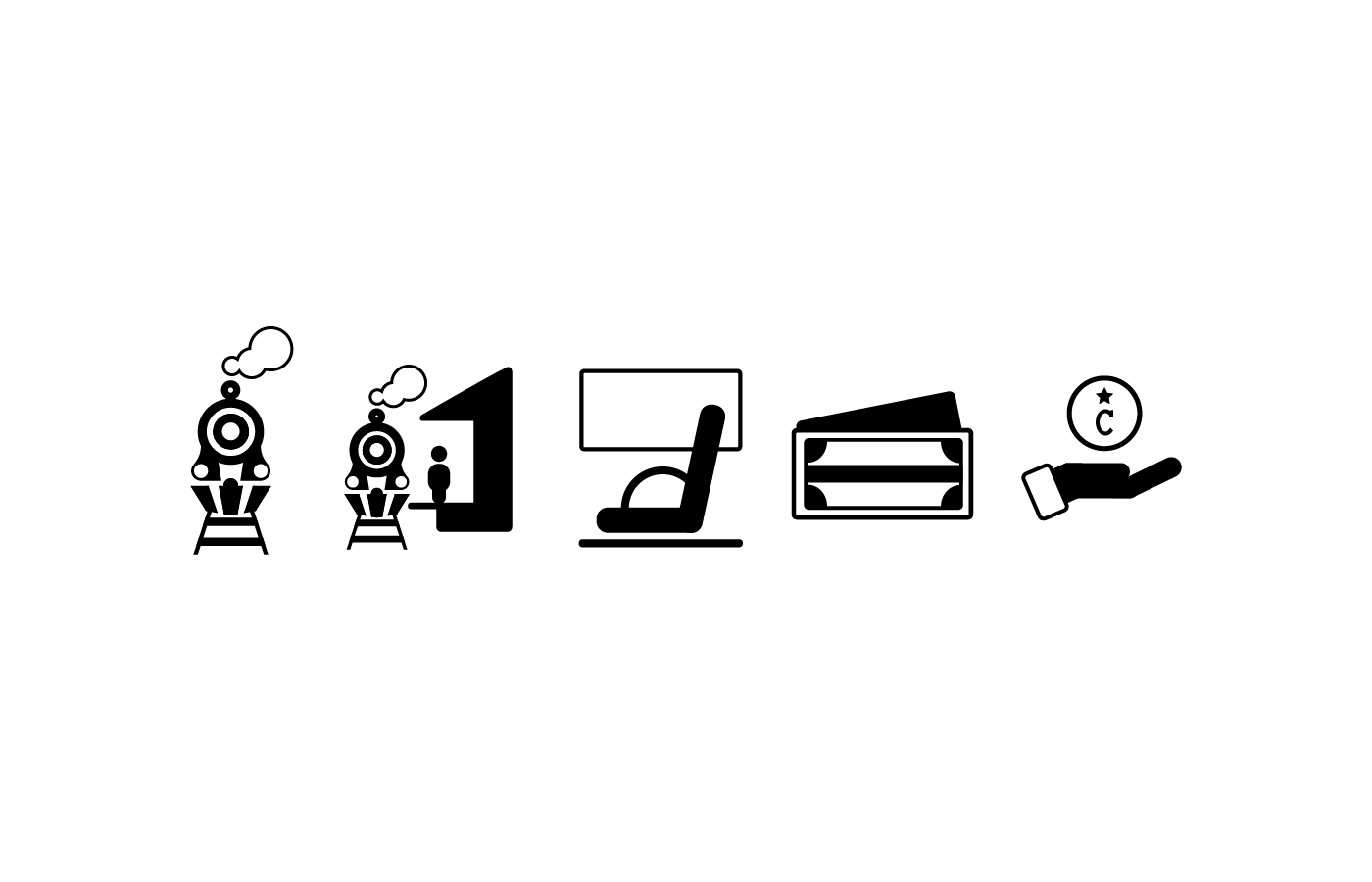
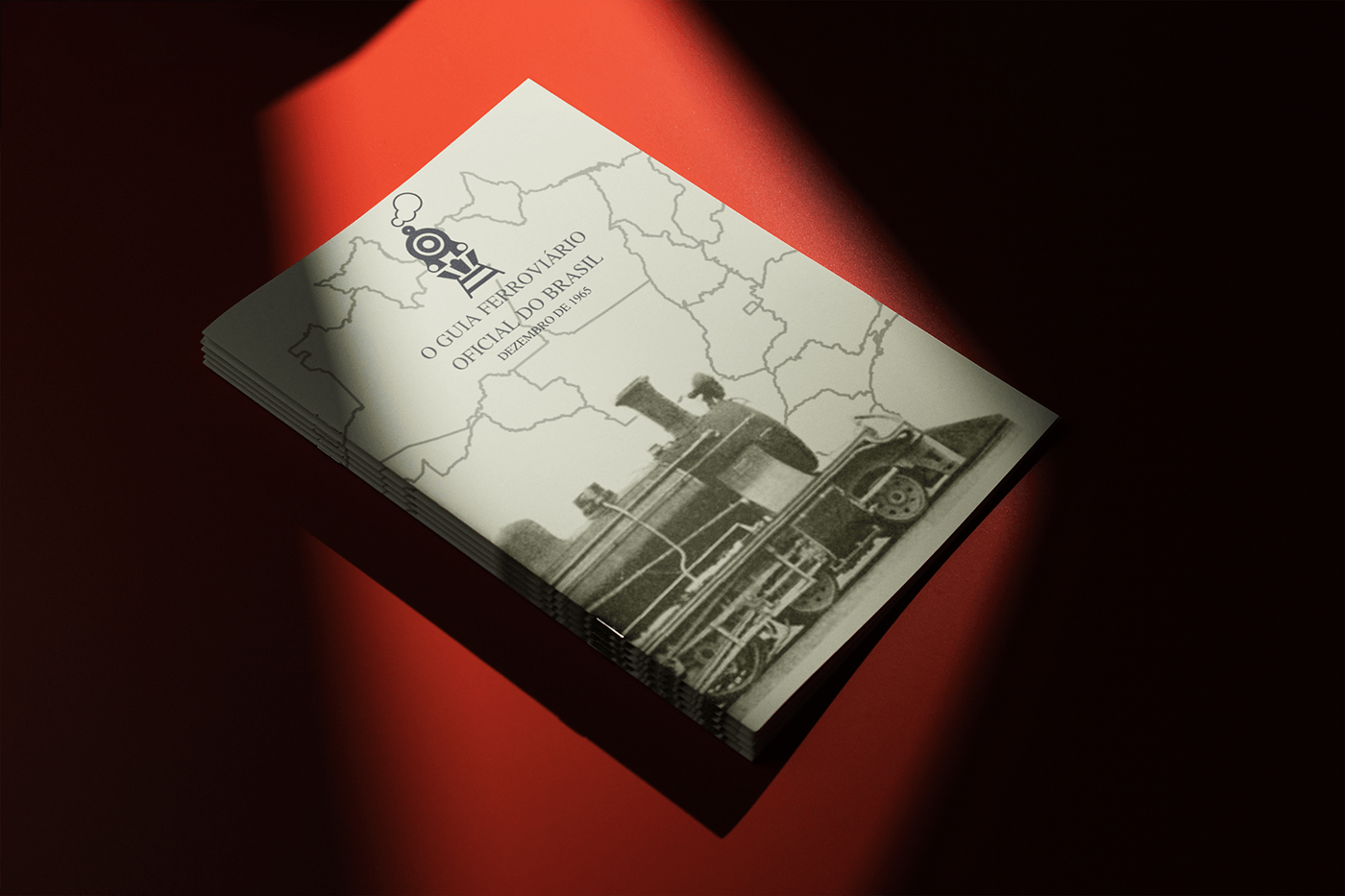
Marios Kytoudis / 1970 / France





In the 1970s, French railways underwent a transformative period marked by significant changes in infrastructure, technology, and management. The decade witnessed the electrification of major railway lines, enhancing efficiency and sustainability. The introduction of the high-speed TGV (Train à Grande Vitesse) in 1981 had its roots in the preceding decade, showcasing France's commitment to cutting-edge rail travel.
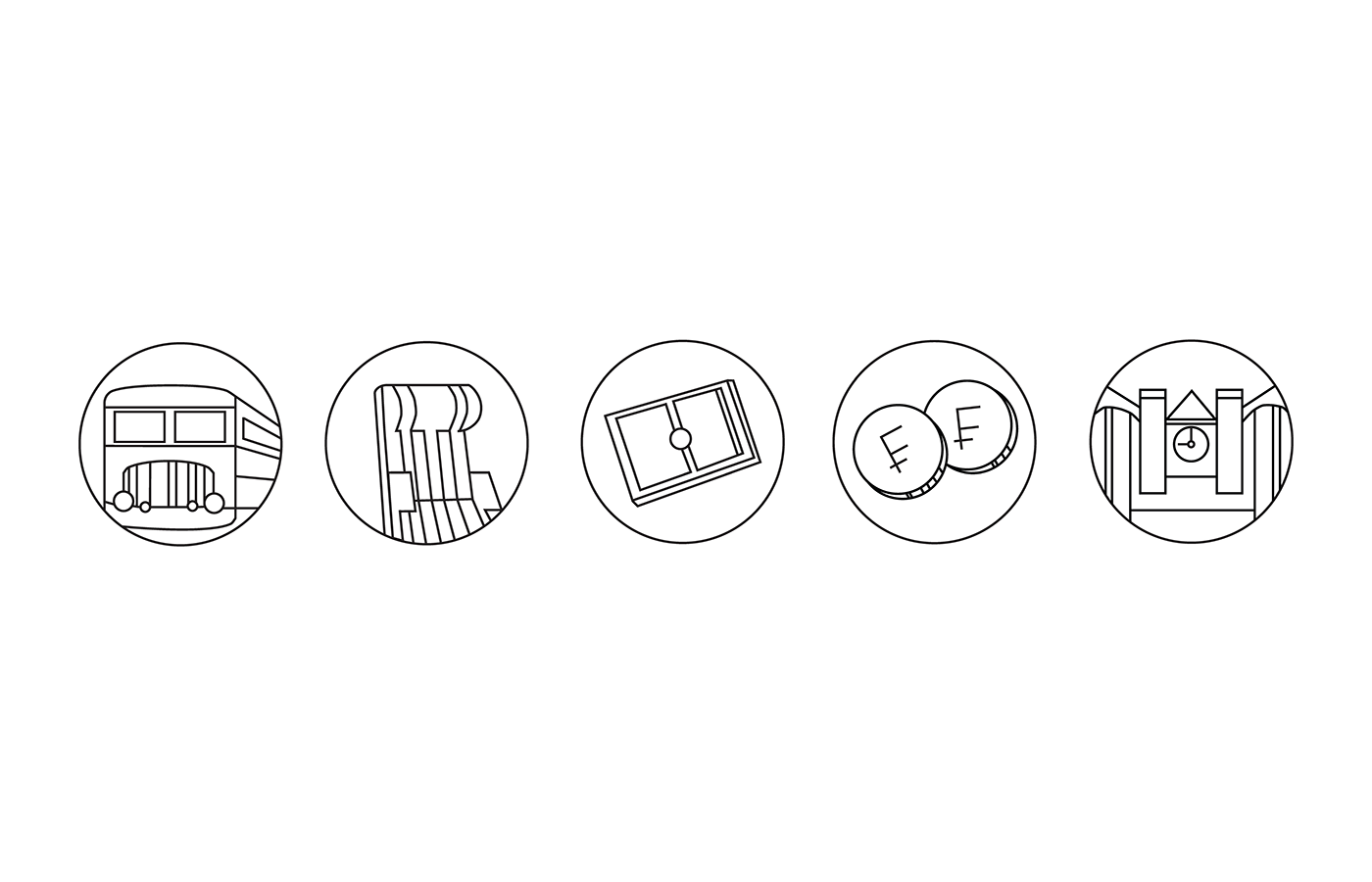
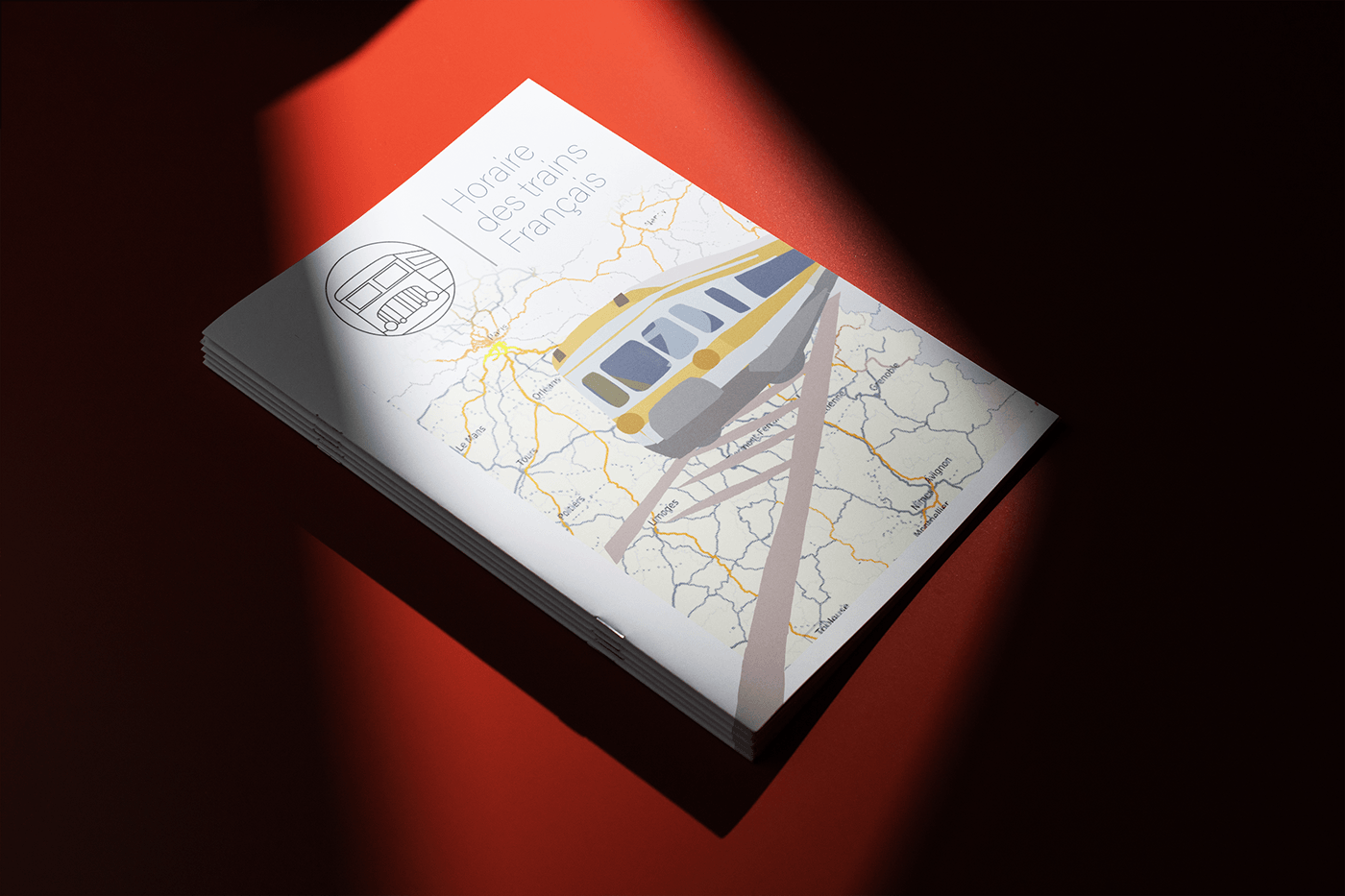
Anna Maria Marinopoulou / 1935 / Belgium





In 1935, Belgium's railway system was characterized by a well-developed and efficient network that played a crucial role in the country's transportation infrastructure. The railway system facilitated the movement of passengers and goods, contributing significantly to Belgium's economic growth. Despite the challenges brought about by the global economic downturn during the Great Depression, Belgium's railway system remained a vital and reliable means of transportation during this era. For this assignment, I was tasked to design a custom set of icons, for a specific epoche, as well as a brochure cover for the railway’s timetable.
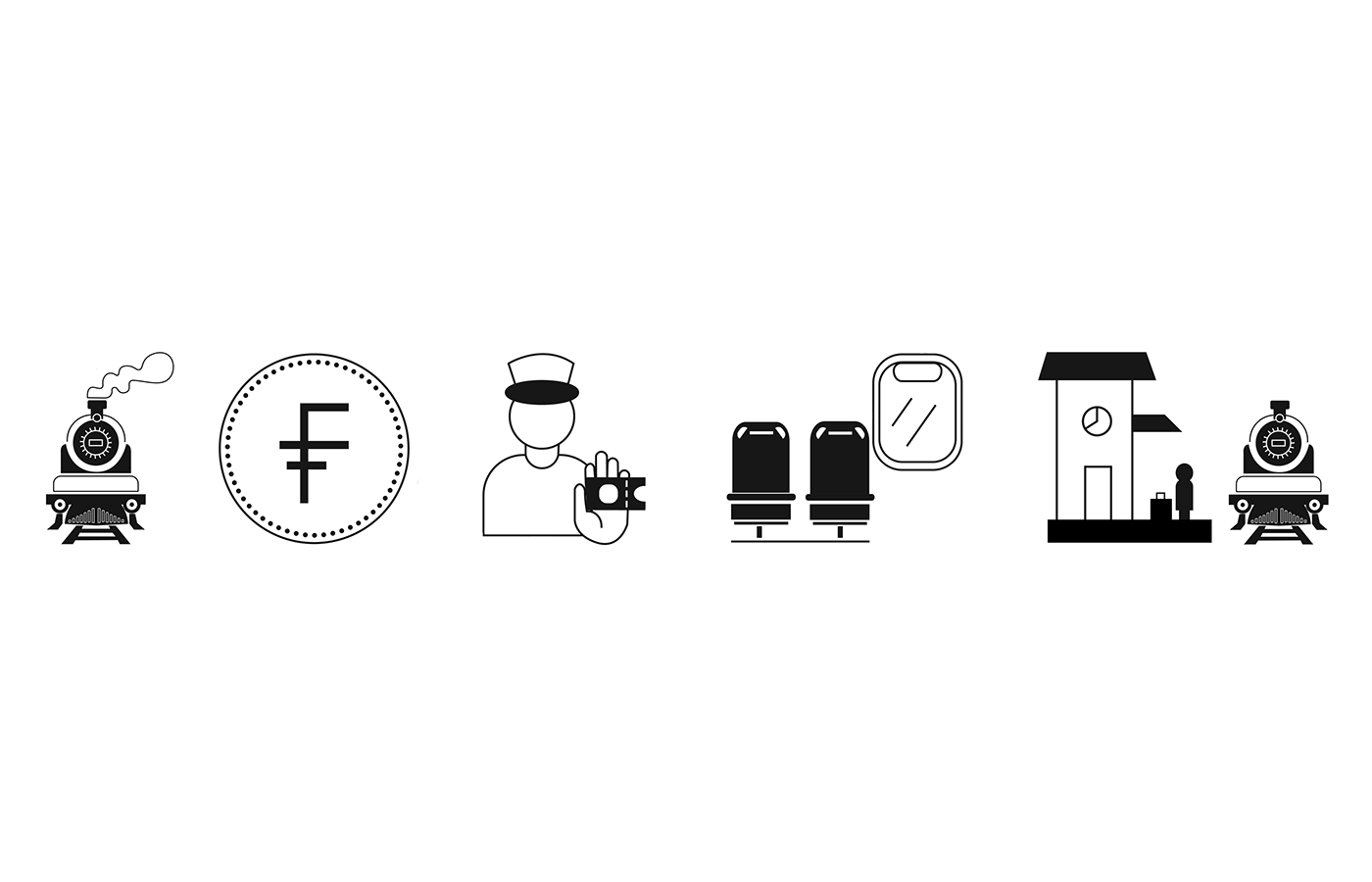
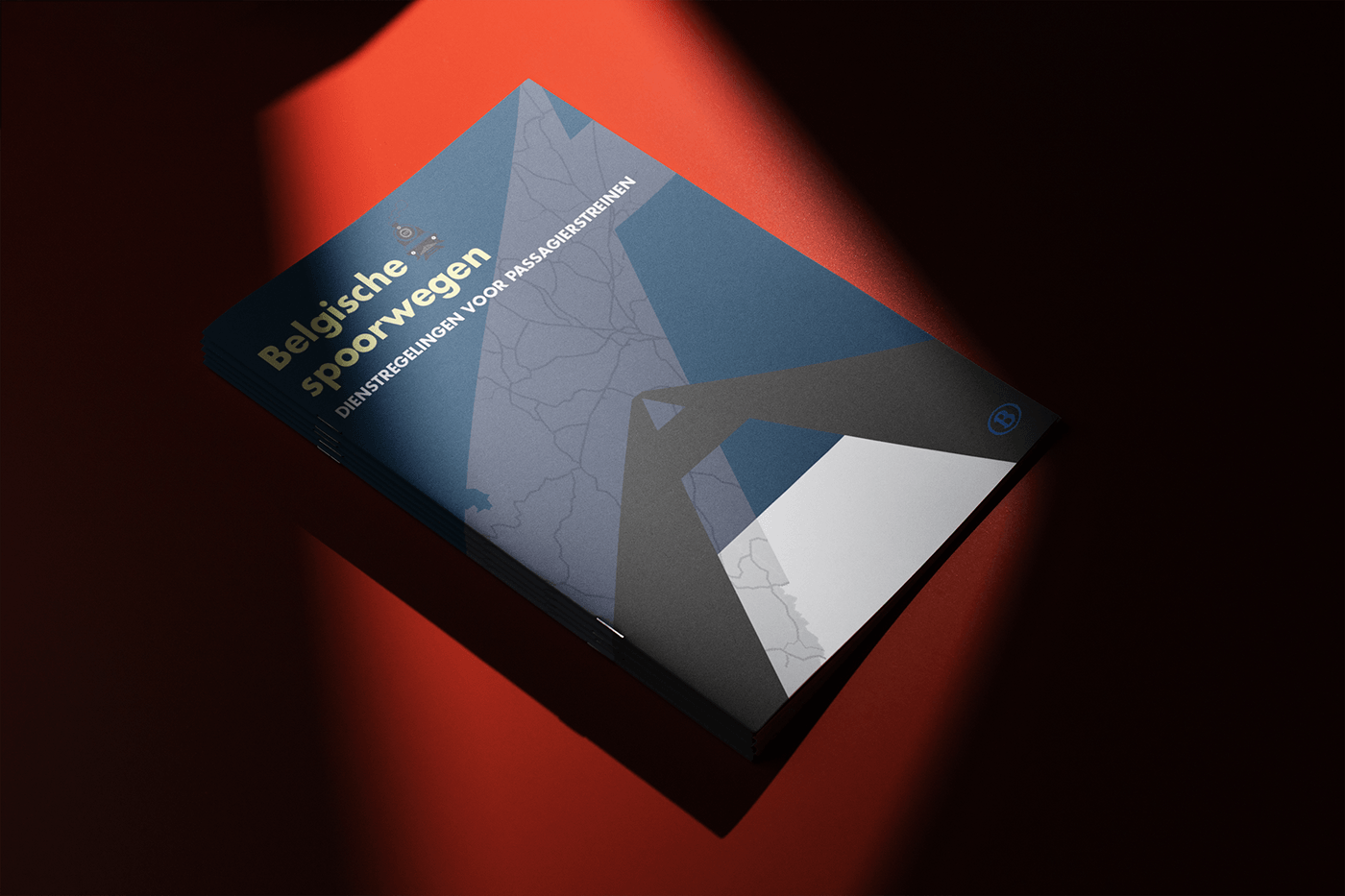
Christos Kytoudis / 1985 / Hungary





In 1935, Belgium's railway system was characterized by a well-developed and efficient network that played a crucial role in the country's transportation infrastructure. The railway system facilitated the movement of passengers and goods, contributing significantly to Belgium's economic growth. Despite the challenges brought about by the global economic downturn during the Great Depression, Belgium's railway system remained a vital and reliable means of transportation during this era. For this assignment, I was tasked to design a custom set of icons, for a specific epoche, as well as a brochure cover for the railway’s timetable.
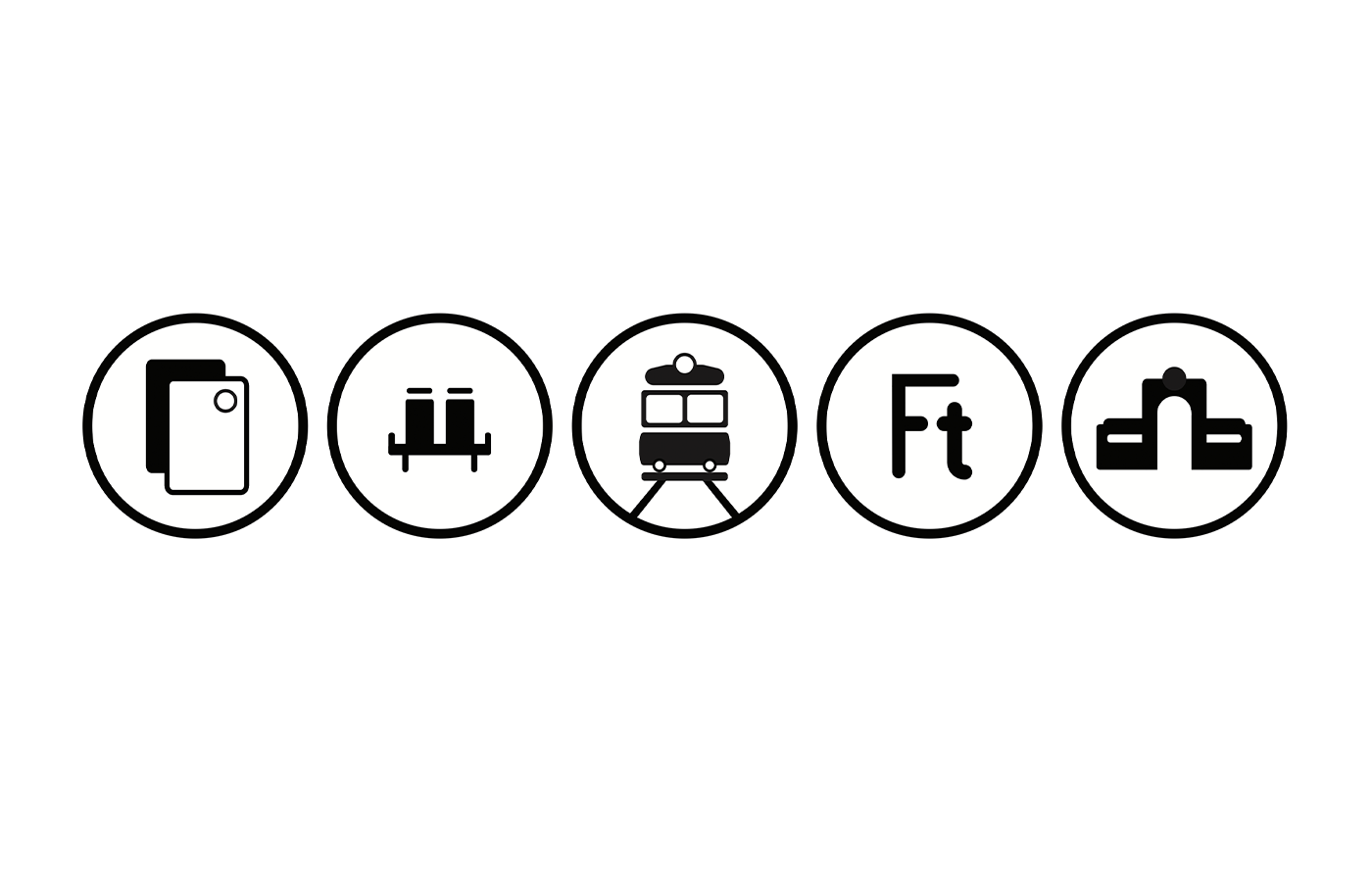
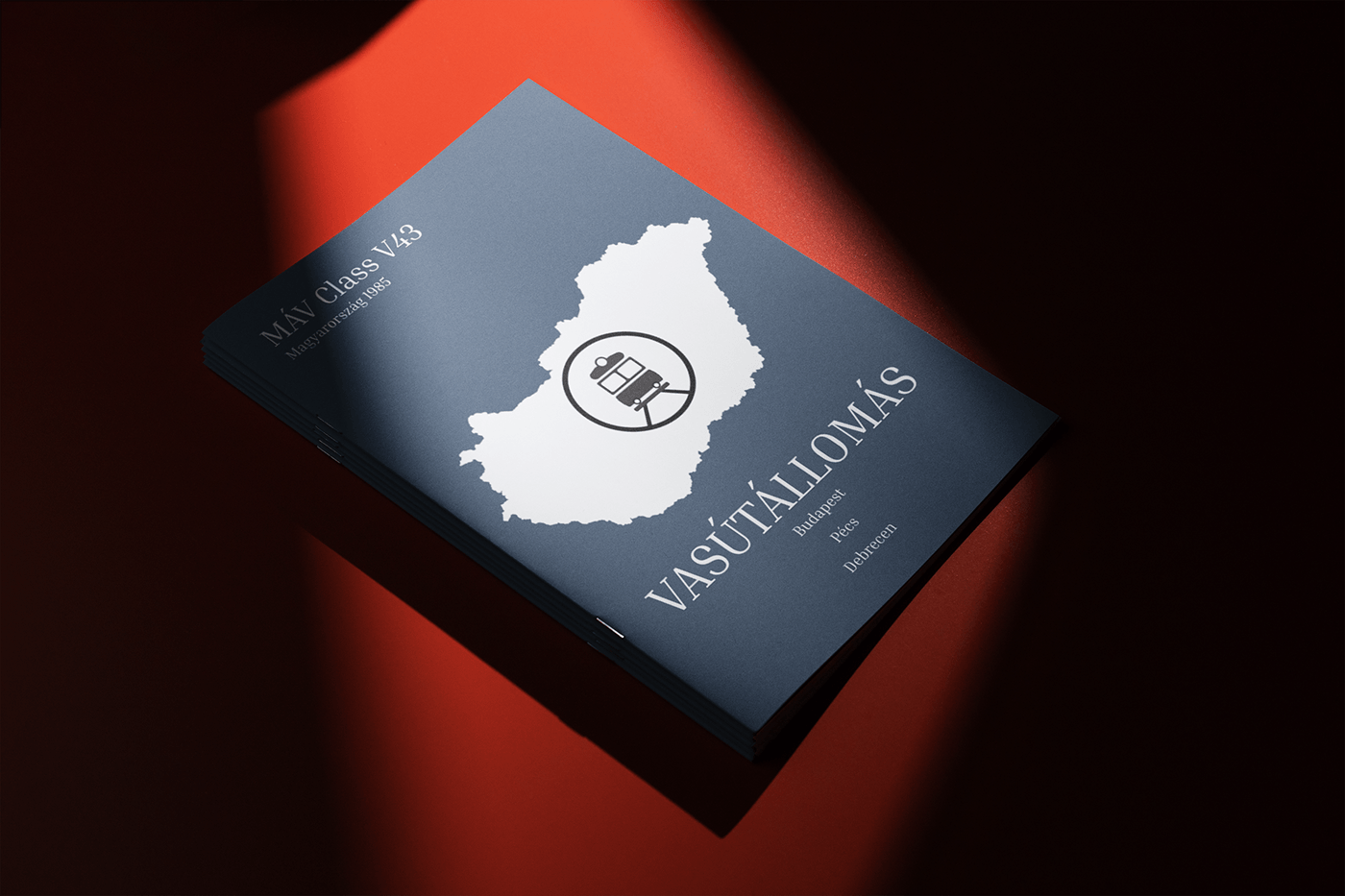
Andreas Peschanskyy / 1970 / Switzerland





In the design field of 1970s Switzerland, the Swiss style influenced a new wave of graphic design, characterized by clarity and simplicity. These icons are mirroring this aesthetic, emerged as visual representations of efficiency and order in transportation. By using clean and bold lines the icons are embodying both functionality, elegance and they enscapulate the Swiss style.
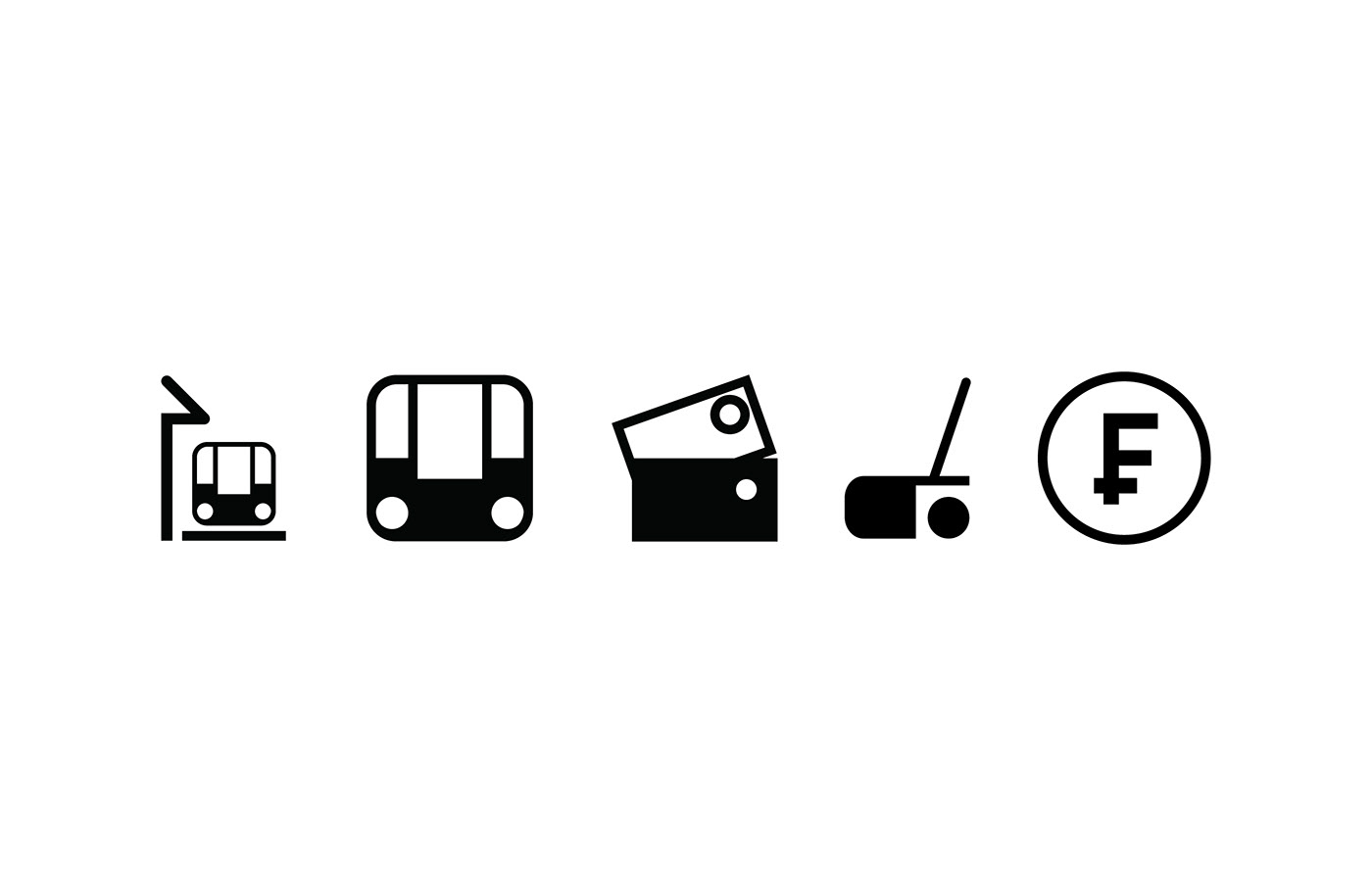
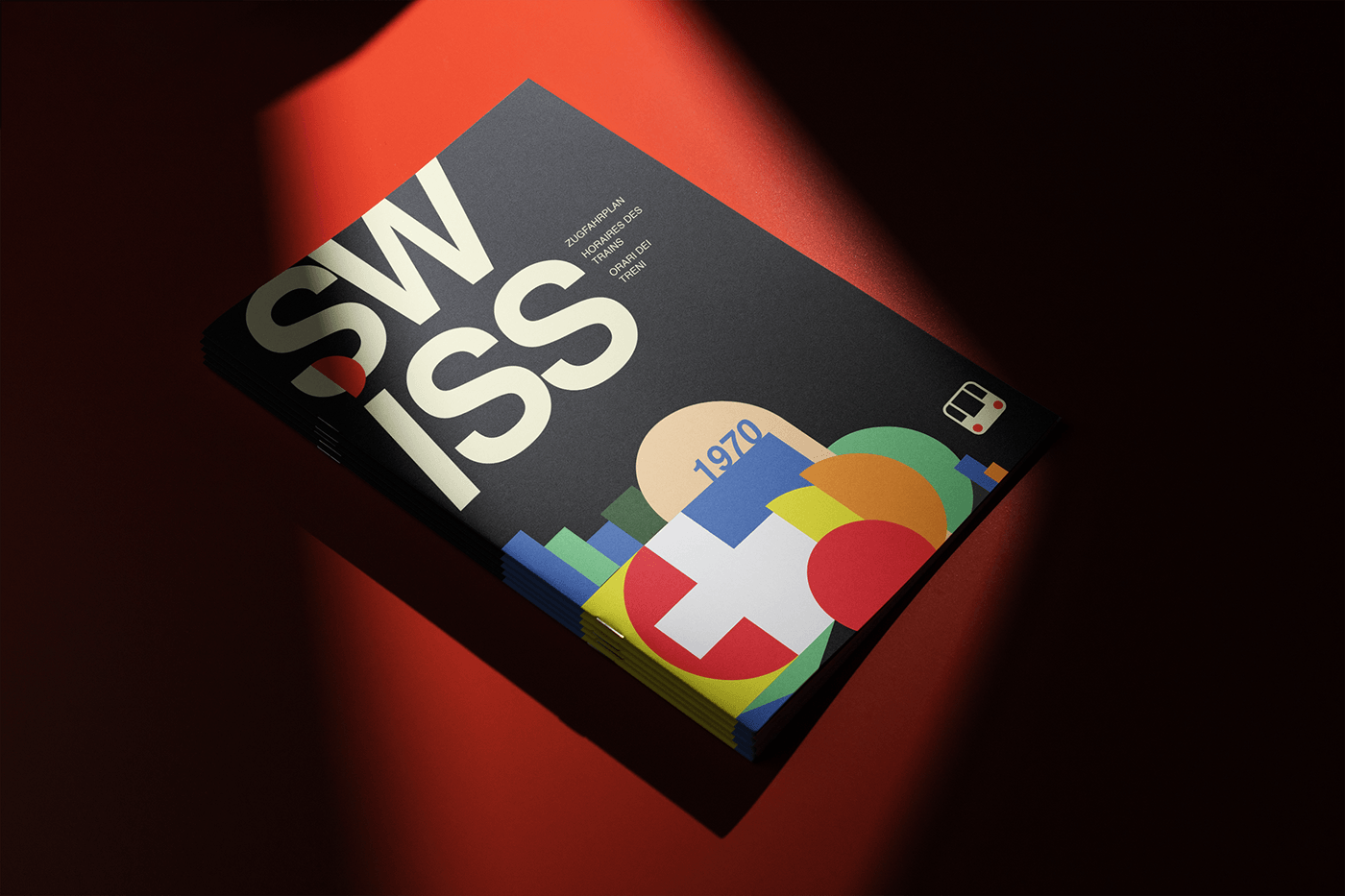
Ioanna Saita / 1920 / Japan





Transporting to the essence of 1920s Japan, my redesigned icons for the railway system reflect the era's elegance and innovation. Given the time period, many structures, including railway stations, were built using materials that were readily available and affordable such as wood, metal and simple paint. The design should be supported by these materials.
Clean lines and basic shapes are essential to ensure visibility, especially in low-tech environments without printing capabilities.


Nick Daskalakis / 1960 / Mexico





In 1960, Mexico's railway system was not just a network of tracks and trains; it was a reflection of the country's economic, social, and cultural dynamics. I designed this symbols to capture the essence of this pivotal moment and to make it easily recognisible by the passengers. The symbols that I designed represent a train, station, passenger seats, ticket office and money exchange. During the mid-20th century, Mexico was undergoing significant changes, both politically and economically. The government, under President Adolfo López Mateos, focused on modernization initiatives, and the railway system played a crucial role in facilitating these advancements. My symbols embody the fusion of tradition and progress, echoing the nation's quest for development while holding onto its rich heritage. In conclusion, my drawings of Mexican train symbols in 1960 serve as a visual time capsule, encapsulating the spirit of a nation in transition.

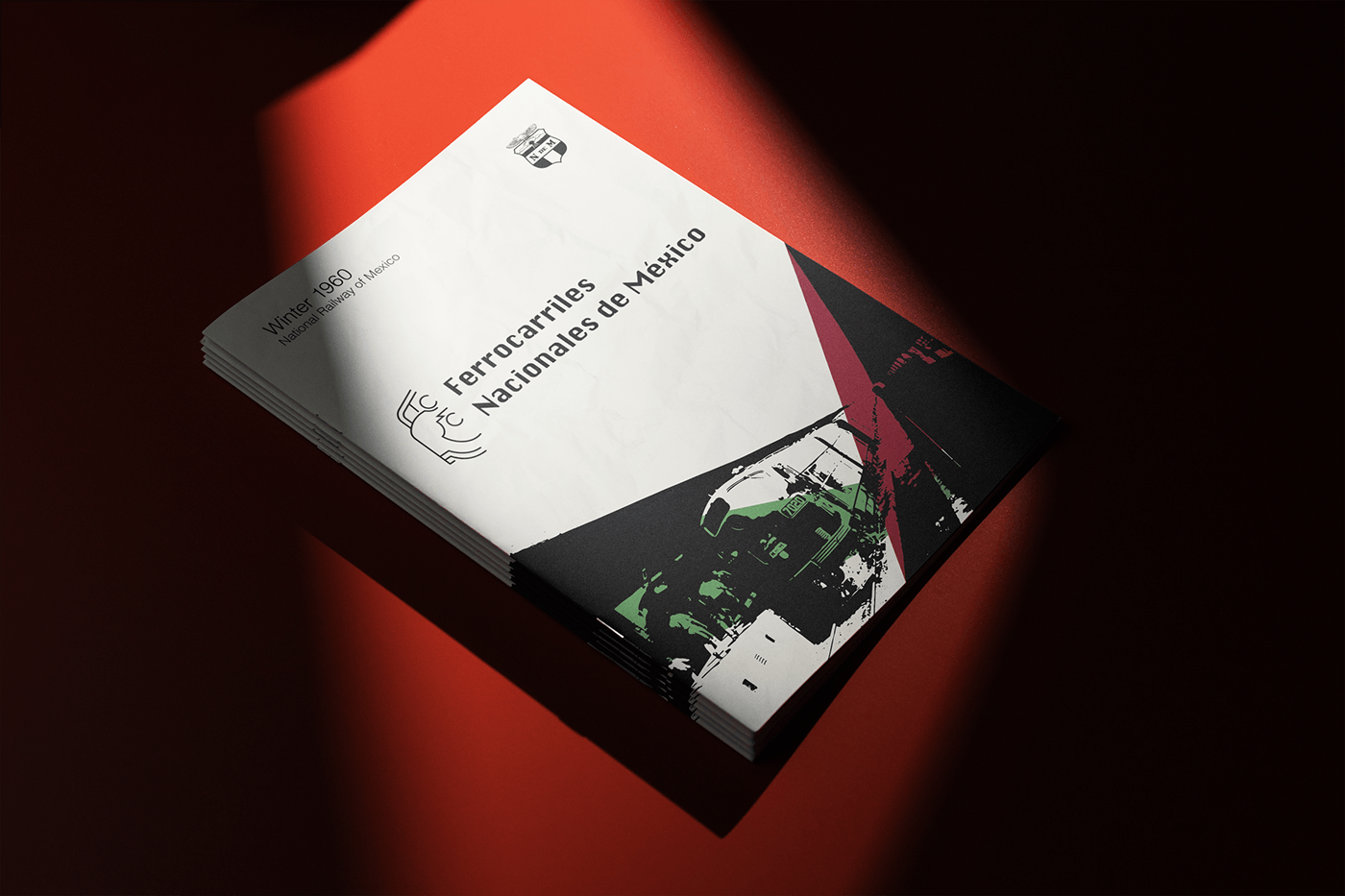
Christodoulos Tziouklis / 1940 / Argentina





In the 1940s, the railway system in Argentina played a pivotal role in shaping the country's economic landscape and connecting its vast and diverse regions. During this period, Argentina boasted one of the most extensive and advanced railway networks in Latin America. The railways served as a vital lifeline for transporting goods, linking rural areas with urban centers, and facilitating the movement of people across the vast expanse of the country. The trains were not only essential for the transportation of agricultural products, such as wheat and beef, but also for fostering social and cultural exchanges. The 1940s witnessed a period of significant expansion and modernization of the Argentine railway system.

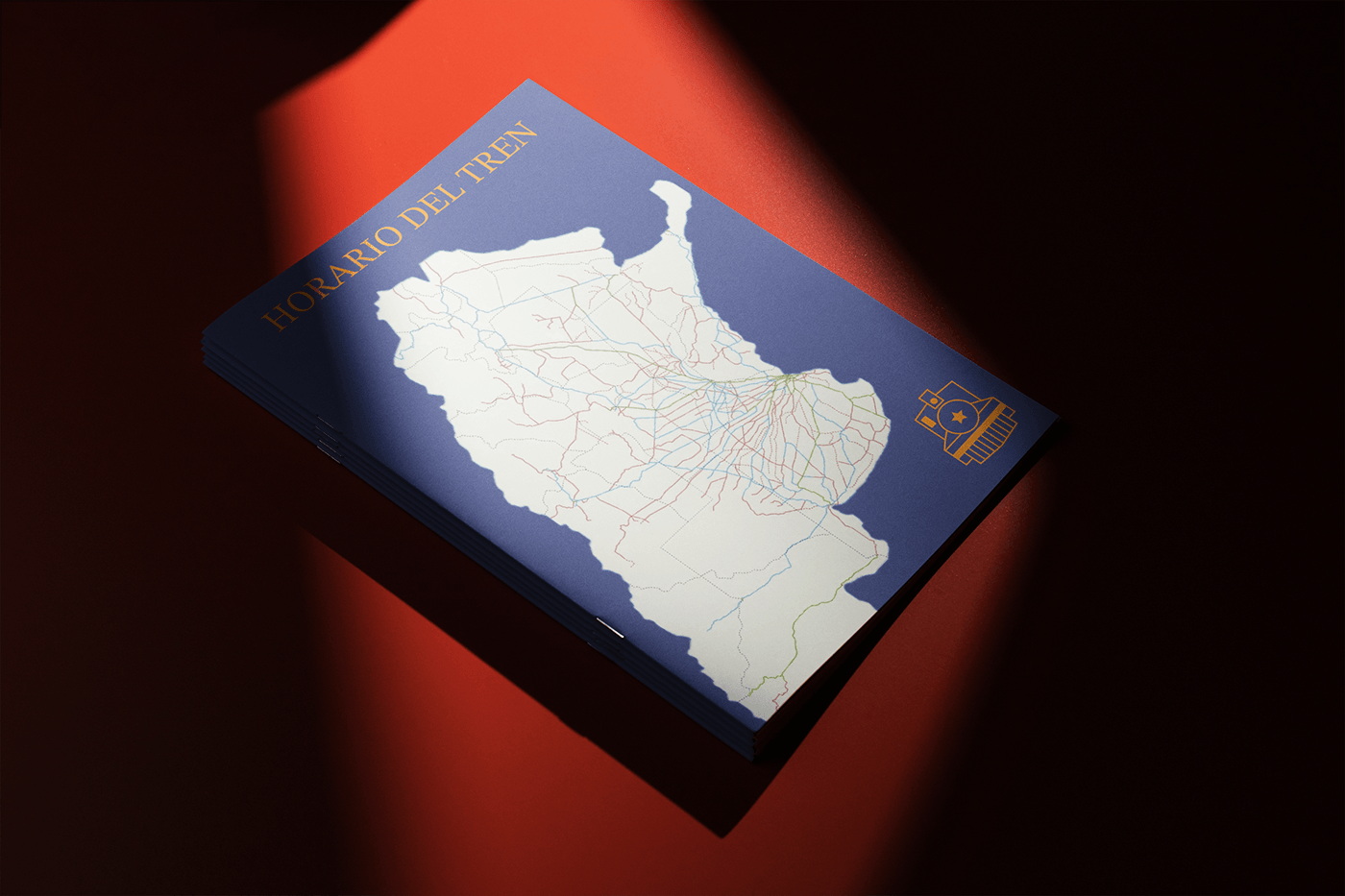
Petros Sideris / 1920 / United Kingdom



The history of rail transport in Great Britain 1830–1922 covers the period between the opening of the Liverpool and Manchester Railway (L&MR), and the Grouping, the amalgamation of almost all of Britain's many railway companies into the Big Four by the Railways Act 1921.
As Manchester had grown on cotton spinning, so Leeds had a growing trade in weaving. The Pennines restricted canal development, so the railway provided a realistic alternative, especially with the growth in coal usage from the mines in the North East and Yorkshire. A number of lines were approved in the area, such as the Leeds and Selby Railway, in 1830, which would link the former to the port of Hull, via the River Ouse.
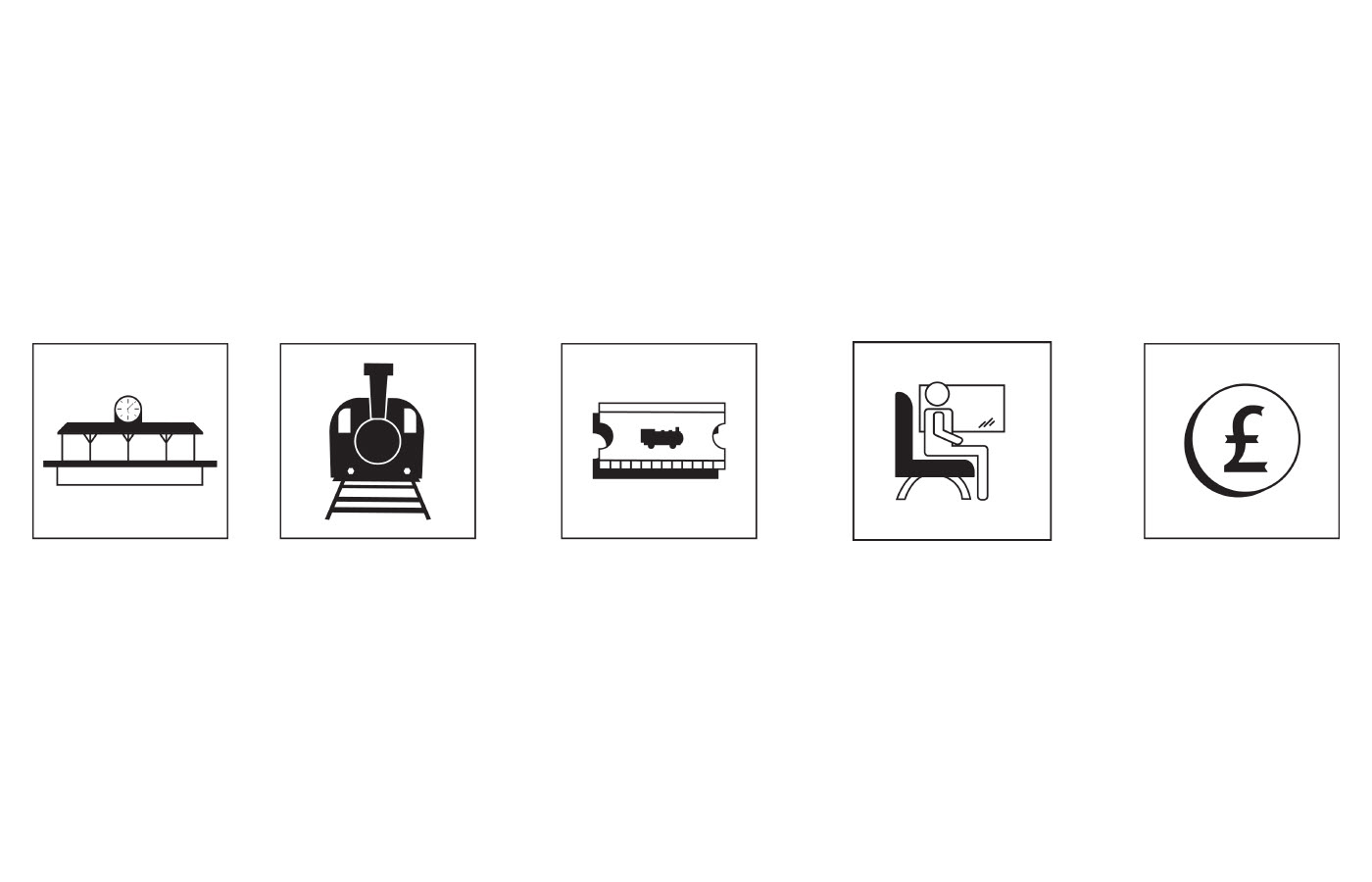
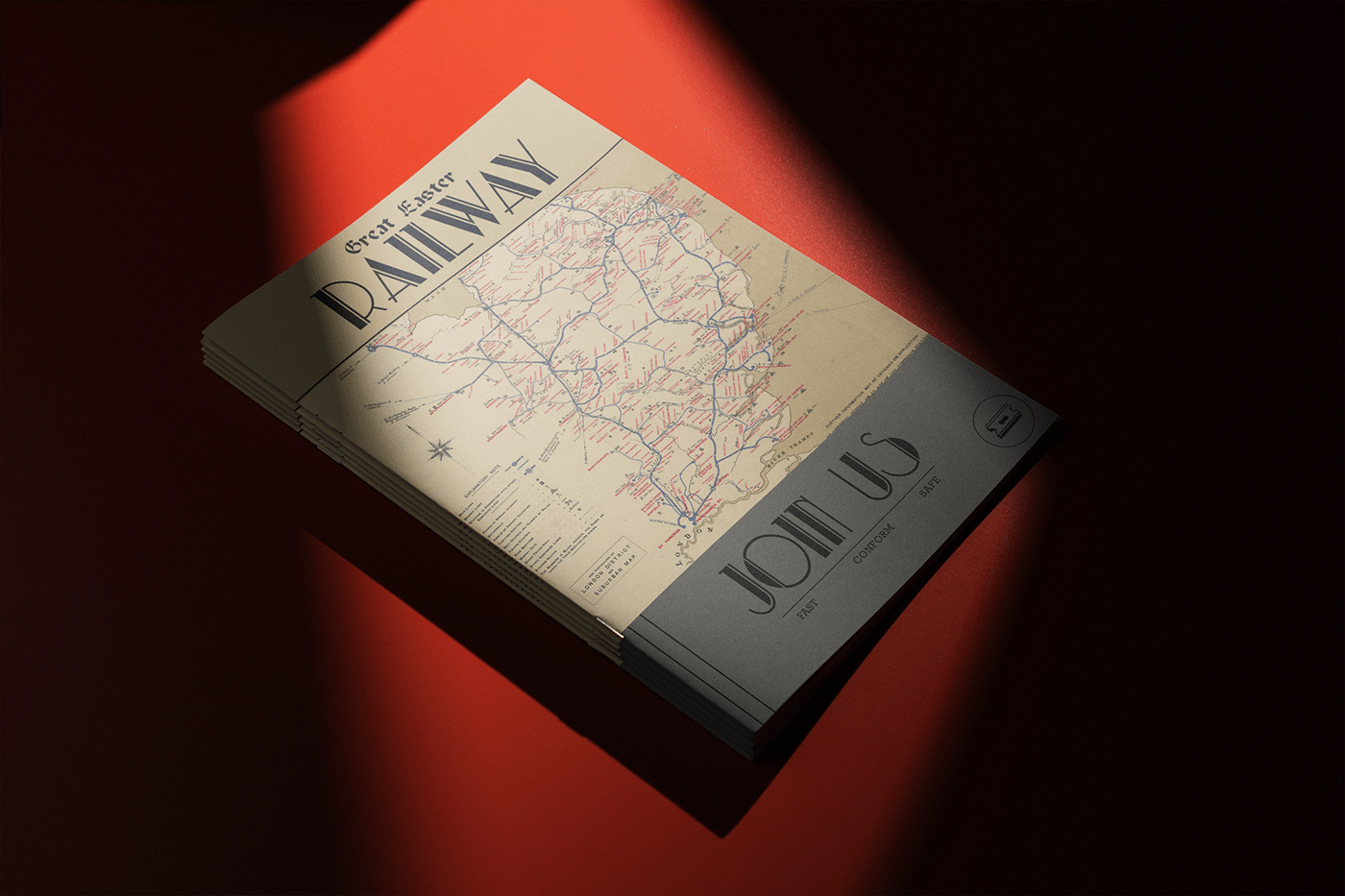
Komninos Palaiologos / 1970 / Norway





The first railway in Norway was the Hoved Line between Oslo and Eidsvoll and opened in 1854. The main purpose of the railway was to move lumber from Mjøsa to the capital, but passenger service was also offered. In the period between the 1860s and the 1880s Norway saw a boom of smaller railways being built, including isolated railways in Central and Western Norway.

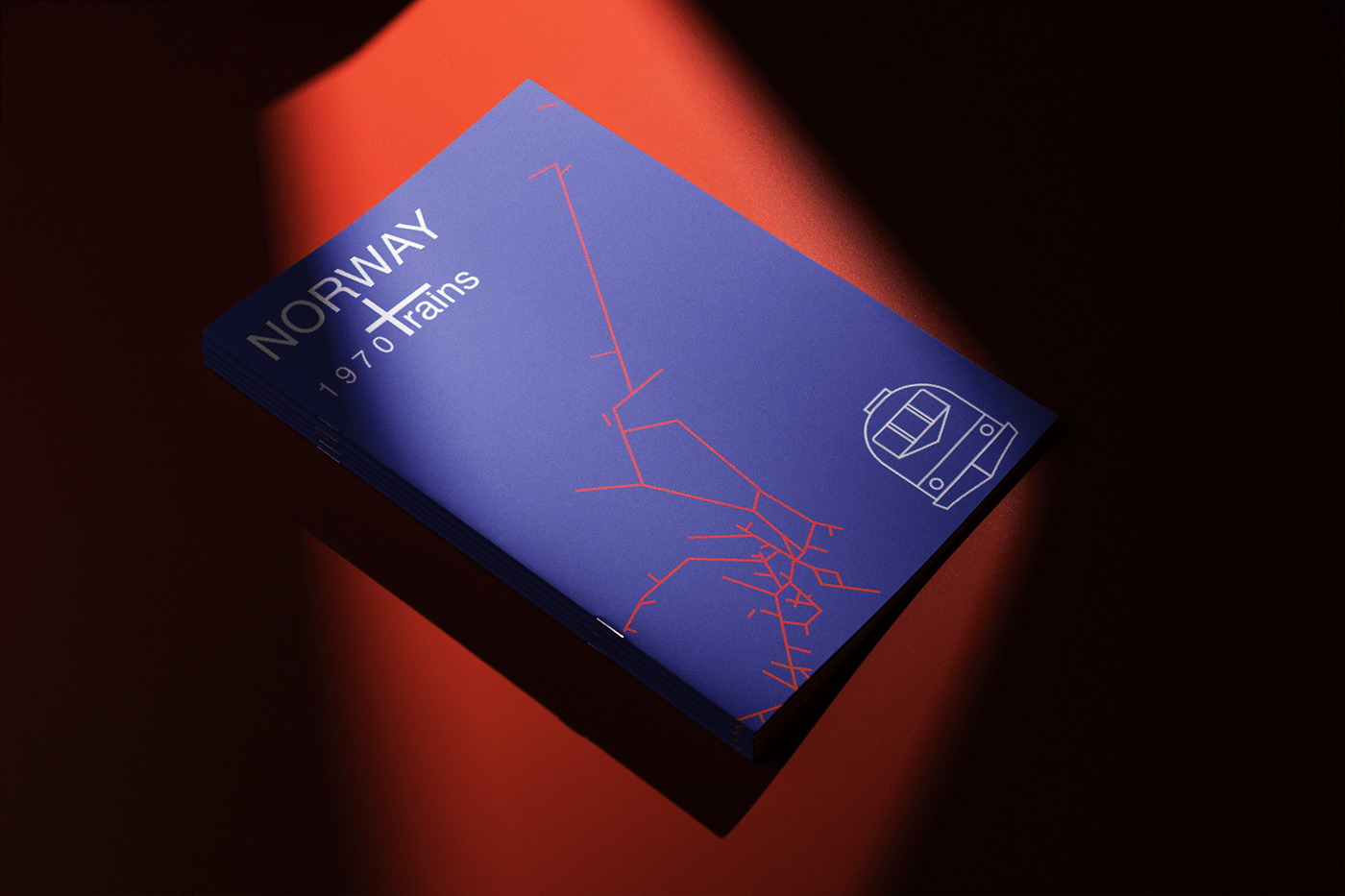
Paris Gouziotis / 1965 / China





In 1965, China's railway system played a pivotal role in the nation's economic development and connectivity. The railway network underwent significant expansion as part of the country's modernization efforts under the leadership of Chairman Mao Zedong. The emphasis on rail infrastructure aimed to facilitate efficient transportation of goods and people across vast distances. This era witnessed the construction of key rail links, connecting major cities and remote regions, fostering economic integration. The railways served as a vital lifeline, enabling the swift movement of resources and contributing to the overall progress of China's industrialization, laying the tracks for its future economic prowess. My icons are set to represent the classic and unique typography of the Chinese language, while also using the Chinese translations of the icon's meanings in each design.


Irida Havela / 1955 / USA





In 1955, the railway system in the United States was a vital and extensive network that played a crucial role in the nation's transportation infrastructure. The post-war era saw a peak in rail travel and freight transport, with the industry serving as a backbone for the American economy. Steam locomotives were still prevalent, although diesel-electric locomotives were gaining popularity for their efficiency and reliability. The iconic passenger trains, such as the Super Chief and Broadway Limited, provided luxurious and efficient cross-country travel. The railway system linked cities and towns, fostering economic development and connecting communities across the vast expanse of the country. However, this period also marked the beginning of the decline of rail travel as the automobile and air travel gained prominence in the subsequent decades.
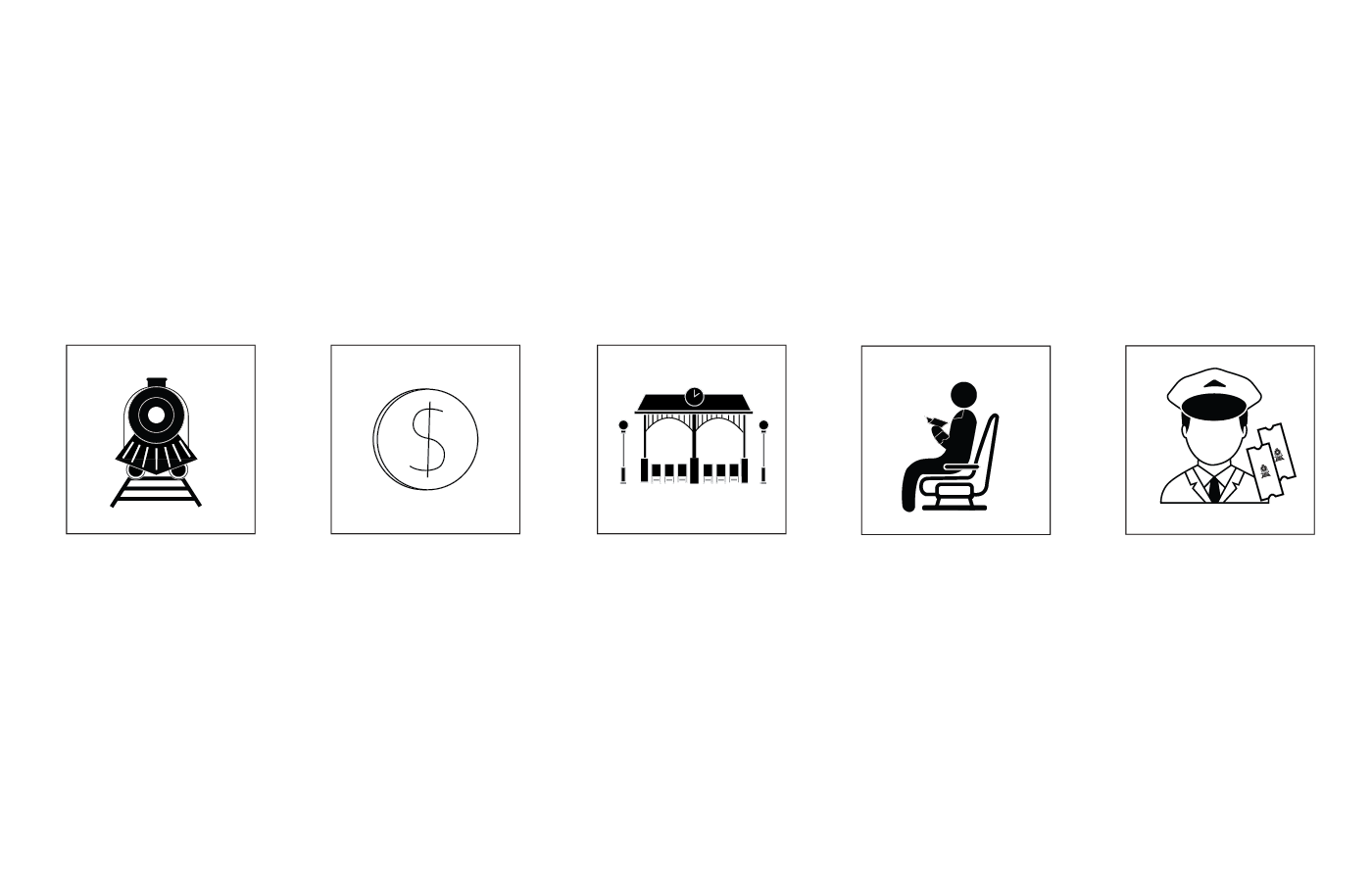
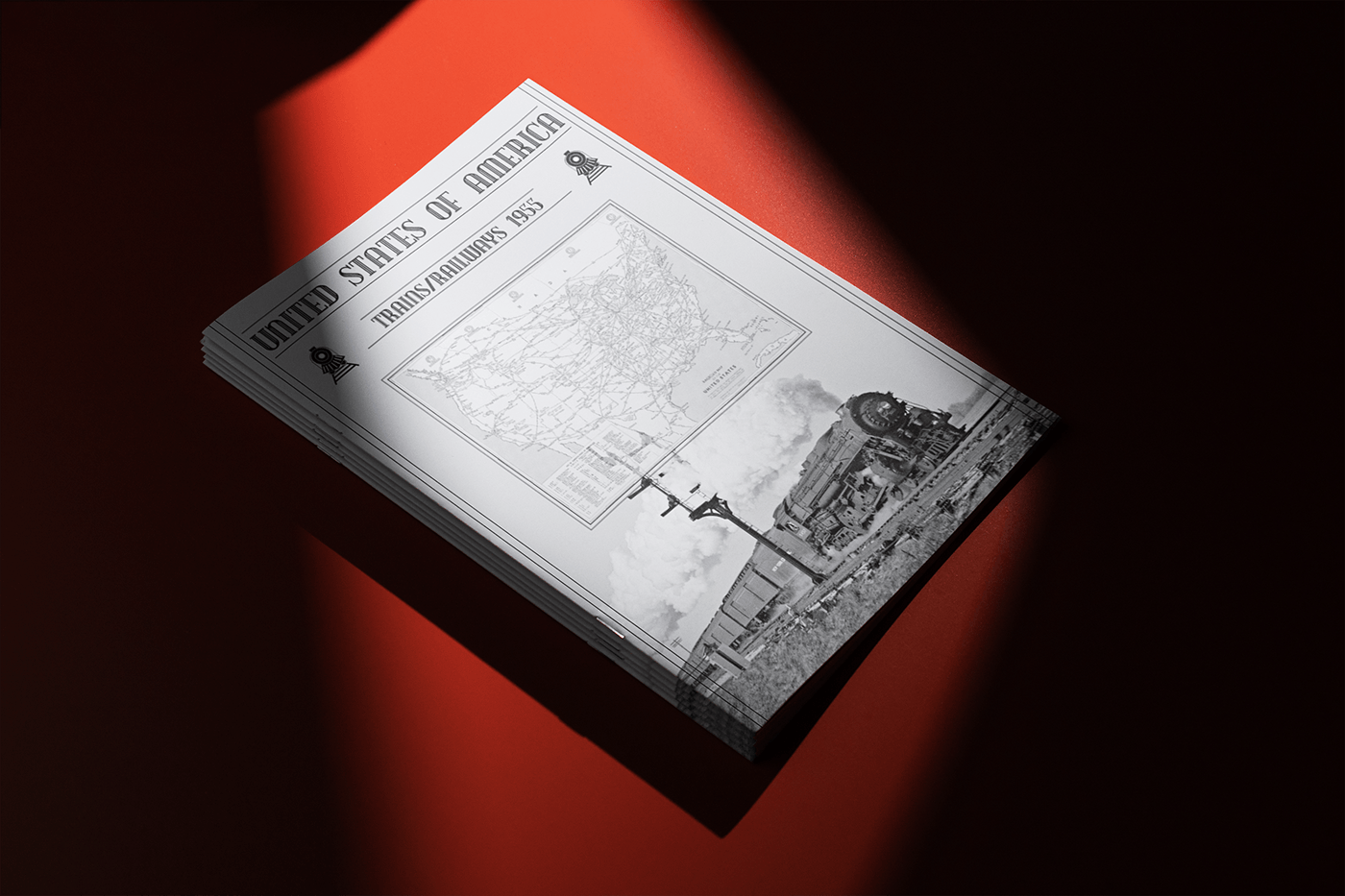
Eirini Nirgianaki / 1965 / Spain





In 1965, trains in Spain had a unique appearance, blending traditional and modern elements. Steam engines, still in use, provided a rustic feel, while the transition to electric and new rolling stock reflected the era's progress. Carriages often featured colors reflecting the vibrancy of Spanish culture. The overall image was a harmonious composition of tradition and technology in the locomotive heart of the country.
